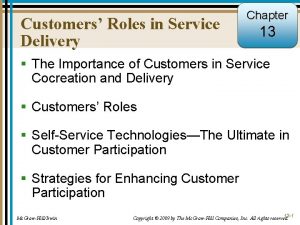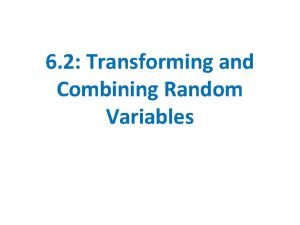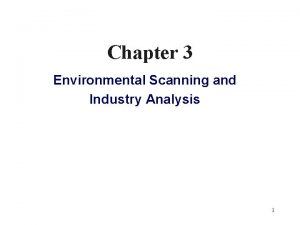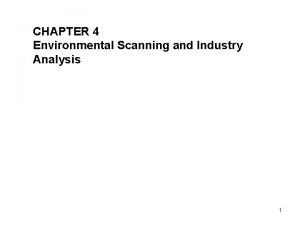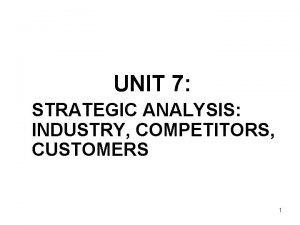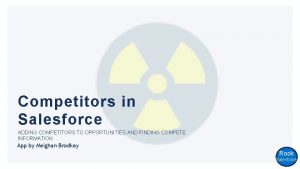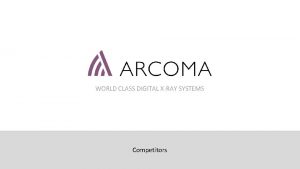Industry AnalysisMkt Definition Analysis of customers competitors and












- Slides: 12

Industry Analysis/Mkt Definition • Analysis of customers, competitors and industry are interdependent. • Require balance between identifying too many and too few competitors. • Many bases for competition. • Different levels of competition.

Industry Analysis/ Mkt Definition • Bases of Competition 1. Customer oriented (Who they are; When they use it; Why they use it) 2. Marketing oriented (Theme/copy strategy; Media; Distribution; Price) 3. Resource oriented (Raw materials; Employees; Financial resources) 4. Geographic • Levels of Competition- 1. Product form; 2. Product category; 3. Generic; 4. Budget

Industry Analysis/Mkt Definition • Methods of determining competition: 1. Existing categories 2. Technical feasibility of substitution 3. Managerial judgement

Industry Analysis/Mkt Definition • Methods for determining competition (contd. ): 4. Customer behavior based - Brand switching - Interpurchase times - Cross elasticity of demand 5. Customer judgement based - Overall similarity - Similarity of consideration sets - Product deletion - Substitution in use

Competitor Identification • Identifying competitors by identifying substitutes • Substitutes are products whose crossprice elasticities of demand are positive • There is a distinction between direct and indirect competitors • Similar products in different geographic markets may not be substitutes

Market Definition • Market definition describes the market in which a firm competes • Two firms are in the same market if they constrain each others ability to raise price • Suppose all firms collectively set prices to maximize combined profits. Would they choose to raise prices by a least 5%?

Market definition • If the own-price elasticity of a group of firms collectively is small, then this group of firms constitutes a well-defined market • Antitrust agencies (Dept of Justice) looks at the above

Market Structure and Competition • Market structure refers to the number and distribution of firms in a market • Common measures are N-firm concentration ratio and Herfindahl index • The Herfindahl index of an industry depends on the nature of competition in the industry

A typology of competition • Perfect competition: - many sellers - homogenous products -well-informed consumers can costlessly shop around

A typology of competition • Monopoly: -no competition for output • Monopolistic competition: -many sellers -each sells a differentiated product • Oligopoly: -few sellers, so the actions of one firm materially affects the others

A Tool for Assessing Industry Attractiveness: Porter’s Five Forces Threat of new entrants Bargaining power of suppliers Rivalry among existing industry firms Threat of substitute products Bargaining power of buyers

Performing the 5 -forces analysis • Assess each force by asking “Is it sufficiently strong to reduce/eliminate industry profits? ” • Internal rivalry -begin by defining market -price competition drives down prices -non price competition drives up costs -industry prices do not fall by themselves, so you ask “Who will reduce it and why? ”
 Customers role in service delivery
Customers role in service delivery Marks and spencer strengths and weaknesses
Marks and spencer strengths and weaknesses Under armour competitive analysis
Under armour competitive analysis Competitive analysis grid
Competitive analysis grid Who is louis vuitton target market
Who is louis vuitton target market Industry analysis definition
Industry analysis definition Customer organization
Customer organization Direct and indirect competitors examples
Direct and indirect competitors examples Transforming and combining random variables
Transforming and combining random variables Abercrombie and fitch competitors
Abercrombie and fitch competitors The corporation's societal environment
The corporation's societal environment Environmental scanning and industry analysis
Environmental scanning and industry analysis The corporation's task environment
The corporation's task environment
